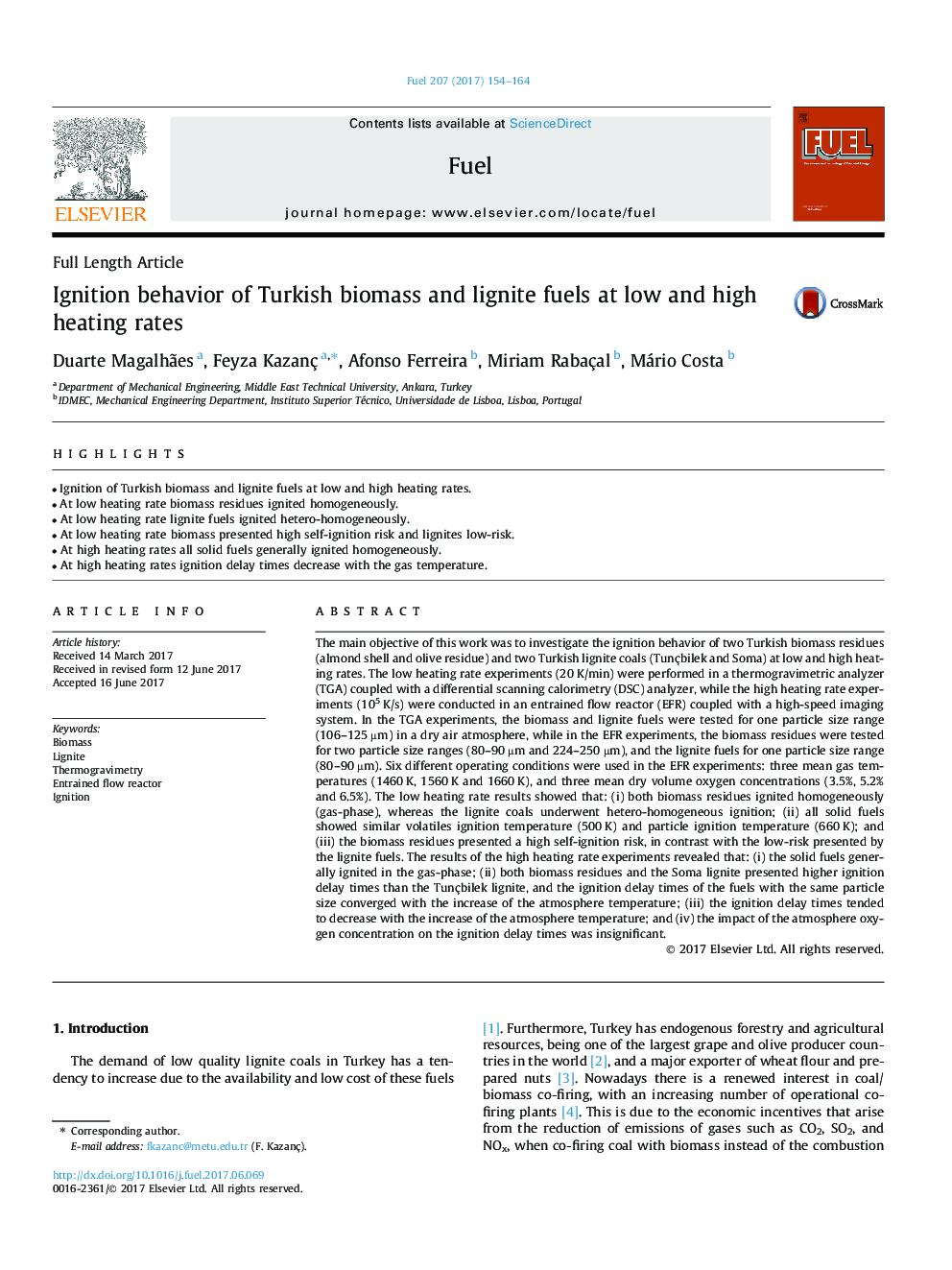| کد مقاله | کد نشریه | سال انتشار | مقاله انگلیسی | نسخه تمام متن |
|---|---|---|---|---|
| 4768471 | 1424957 | 2017 | 11 صفحه PDF | دانلود رایگان |
عنوان انگلیسی مقاله ISI
Ignition behavior of Turkish biomass and lignite fuels at low and high heating rates
ترجمه فارسی عنوان
رفتار احتراق سوخت زیست توده ترکیه و سوخت های زغال سنگ در نرخ حرارت پایین و بالا
دانلود مقاله + سفارش ترجمه
دانلود مقاله ISI انگلیسی
رایگان برای ایرانیان
کلمات کلیدی
زیست توده، سنگ قیمتی، ترموگرافی سنجی، رآکتور جریان پرانرژی، آتش گرفتن،
موضوعات مرتبط
مهندسی و علوم پایه
مهندسی شیمی
مهندسی شیمی (عمومی)
چکیده انگلیسی
The main objective of this work was to investigate the ignition behavior of two Turkish biomass residues (almond shell and olive residue) and two Turkish lignite coals (Tunçbilek and Soma) at low and high heating rates. The low heating rate experiments (20 K/min) were performed in a thermogravimetric analyzer (TGA) coupled with a differential scanning calorimetry (DSC) analyzer, while the high heating rate experiments (105 K/s) were conducted in an entrained flow reactor (EFR) coupled with a high-speed imaging system. In the TGA experiments, the biomass and lignite fuels were tested for one particle size range (106-125 µm) in a dry air atmosphere, while in the EFR experiments, the biomass residues were tested for two particle size ranges (80-90 µm and 224-250 µm), and the lignite fuels for one particle size range (80-90 µm). Six different operating conditions were used in the EFR experiments: three mean gas temperatures (1460 K, 1560 K and 1660 K), and three mean dry volume oxygen concentrations (3.5%, 5.2% and 6.5%). The low heating rate results showed that: (i) both biomass residues ignited homogeneously (gas-phase), whereas the lignite coals underwent hetero-homogeneous ignition; (ii) all solid fuels showed similar volatiles ignition temperature (500 K) and particle ignition temperature (660 K); and (iii) the biomass residues presented a high self-ignition risk, in contrast with the low-risk presented by the lignite fuels. The results of the high heating rate experiments revealed that: (i) the solid fuels generally ignited in the gas-phase; (ii) both biomass residues and the Soma lignite presented higher ignition delay times than the Tunçbilek lignite, and the ignition delay times of the fuels with the same particle size converged with the increase of the atmosphere temperature; (iii) the ignition delay times tended to decrease with the increase of the atmosphere temperature; and (iv) the impact of the atmosphere oxygen concentration on the ignition delay times was insignificant.
ناشر
Database: Elsevier - ScienceDirect (ساینس دایرکت)
Journal: Fuel - Volume 207, 1 November 2017, Pages 154-164
Journal: Fuel - Volume 207, 1 November 2017, Pages 154-164
نویسندگان
Duarte Magalhães, Feyza Kazanç, Afonso Ferreira, Miriam Rabaçal, Mário Costa,
